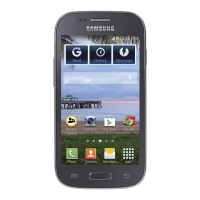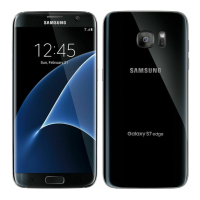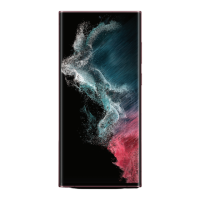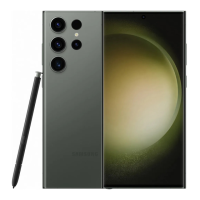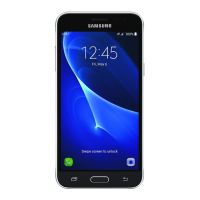Do you have a question about the Samsung SM-S711B and is the answer not in the manual?
Overview of the device's physical components and their locations.
Instructions for charging the device via wired and wireless methods.
Guide to inserting physical SIM cards and activating the eSIM.
Procedures for powering the device on, off, and performing a restart.
Steps for configuring the device upon first use or after a reset.
How to navigate and interact with the device's touch screen interface.
Setting up screen lock methods and smart lock features for device protection.
Managing applications, including downloading from stores and removing them.
Making calls, managing contacts, blocking numbers, and call options.
Capturing photos and videos with various modes, settings, and effects.
Viewing, editing, and organizing photos and videos stored on the device.
Using the voice assistant and image recognition features for device interaction.
Connecting the device to a TV or monitor to display content on a larger screen.
Using the phone like a computer with an external display, keyboard, and mouse.
Configuring Wi-Fi, Bluetooth, NFC, mobile data, and hotspots.
Adjusting screen brightness, motion smoothness, color modes, and eye comfort.
Managing device security, biometrics, app permissions, and privacy controls.
Optimizing performance, managing battery health, storage, and device security scans.
System settings including language, date/time, keyboard, and device reset options.
Customizing device settings to enhance usability for users with different needs.
Important safety guidelines, warnings, and best practices for using the device.
Maintaining the device's resistance to water and dust according to standards.
Identifying causes of device overheating and implementing solutions for safe operation.
Solutions for problems like device not turning on, screen issues, and error messages.
Overview of the device's physical components and their locations.
Instructions for charging the device via wired and wireless methods.
Guide to inserting physical SIM cards and activating the eSIM.
Procedures for powering the device on, off, and performing a restart.
Steps for configuring the device upon first use or after a reset.
How to navigate and interact with the device's touch screen interface.
Setting up screen lock methods and smart lock features for device protection.
Managing applications, including downloading from stores and removing them.
Making calls, managing contacts, blocking numbers, and call options.
Capturing photos and videos with various modes, settings, and effects.
Viewing, editing, and organizing photos and videos stored on the device.
Using the voice assistant and image recognition features for device interaction.
Connecting the device to a TV or monitor to display content on a larger screen.
Using the phone like a computer with an external display, keyboard, and mouse.
Configuring Wi-Fi, Bluetooth, NFC, mobile data, and hotspots.
Adjusting screen brightness, motion smoothness, color modes, and eye comfort.
Managing device security, biometrics, app permissions, and privacy controls.
Optimizing performance, managing battery health, storage, and device security scans.
System settings including language, date/time, keyboard, and device reset options.
Customizing device settings to enhance usability for users with different needs.
Important safety guidelines, warnings, and best practices for using the device.
Maintaining the device's resistance to water and dust according to standards.
Identifying causes of device overheating and implementing solutions for safe operation.
Solutions for problems like device not turning on, screen issues, and error messages.
| Model | SM-S711B |
|---|---|
| Category | Cell Phone |
| SIM | Dual SIM (Nano-SIM, dual stand-by) |
| Display Type | Dynamic AMOLED 2X |
| Operating System | Android 13, One UI 5.1 |
| RAM | 8GB |
| Charging | 25W wired, 15W wireless |
| Network | GSM / HSPA / LTE / 5G |
| Bluetooth | 5.3, A2DP, LE |
| NFC | Yes |
| Display Refresh Rate | 120Hz |
| Display Size | 6.7 inches |
| Resolution | 1080 x 2400 pixels |
| CPU | Octa-core |
| Internal Memory | 128GB, 256GB |
| Selfie Camera | 32 MP |
| Battery | 5000 mAh |
| Colors | Cream, Lavender |
| Wi-Fi | Wi-Fi 802.11 a/b/g/n/ac, dual-band, Wi-Fi Direct |
| USB | USB Type-C 2.0 |
| Sensors | accelerometer, gyro, compass |
| IP Rating | IP67 dust/water resistant (up to 1m for 30 min) |

